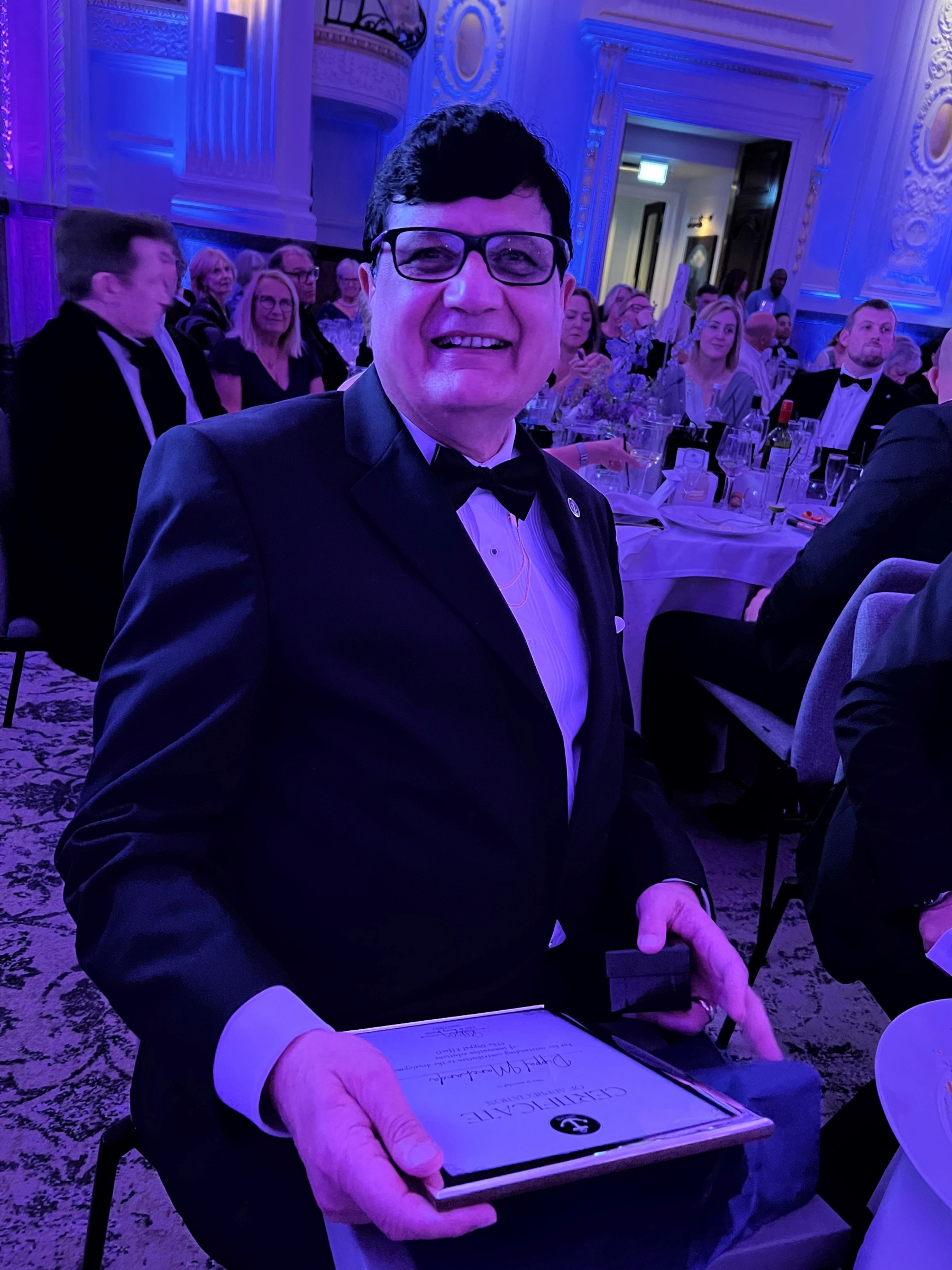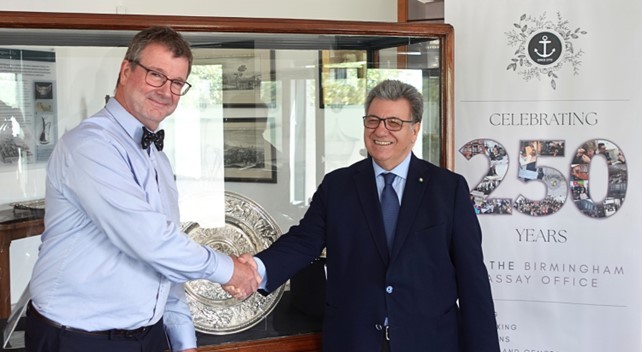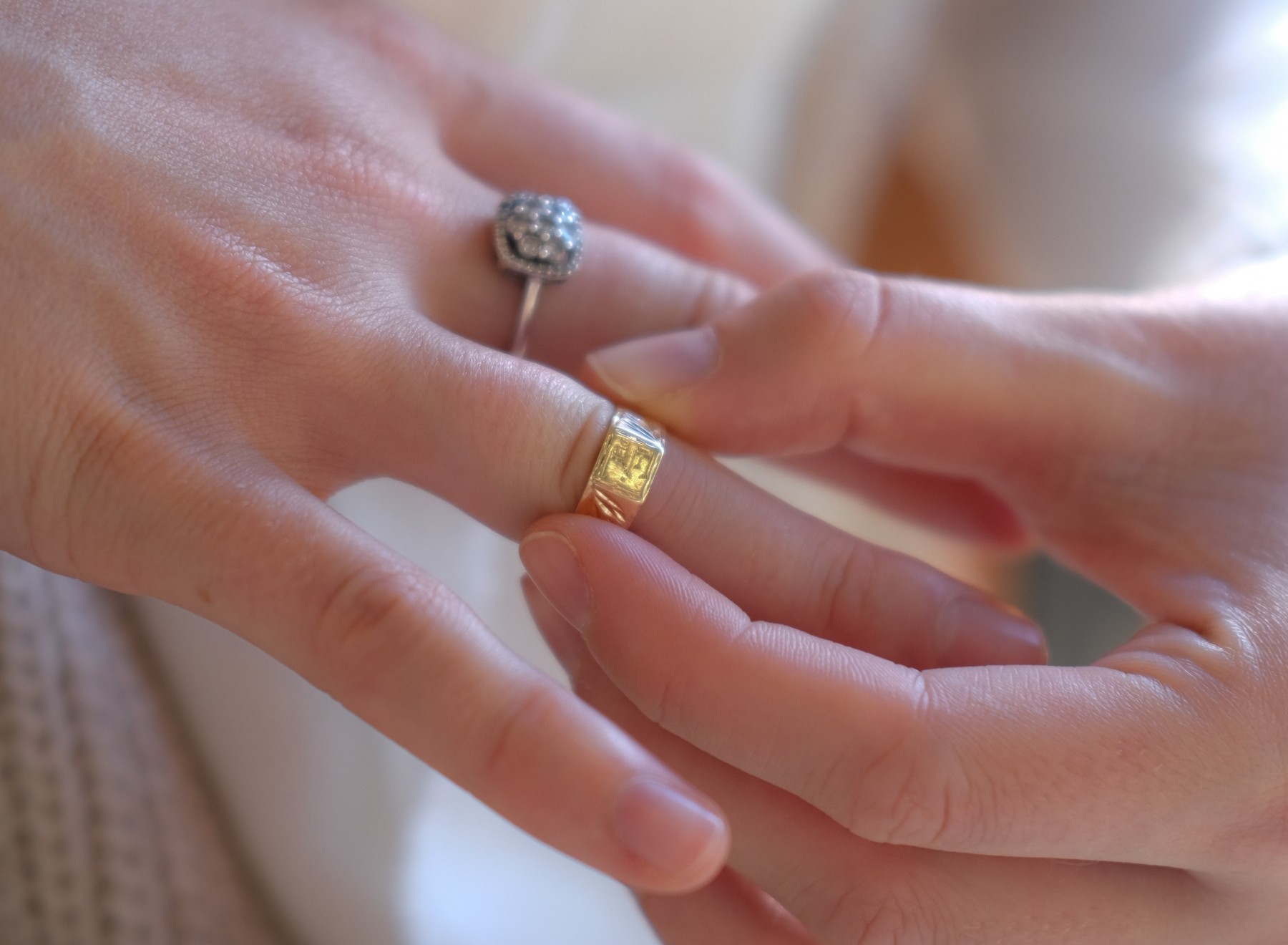Anu Manchanda, senior gemmologist for AnchorCert, the gemstone certification division of the Birmingham Assay Office, explains the rigorous processes that should be undertaken when certificating a diamond.
 The value of two diamonds of apparently the same size can vary hugely depending upon the quality of the stone and the way it has been cut. Such differences in quality are difficult for the untrained eye to assess, and as a result many diamonds are sold accompanied by a diamond certificate defining the characteristics which determine their value â ie colour, clarity, cut and carat weight. Diamond certification is an extremely skilled task, requiring experience and high tech equipment if it is to be undertaken properly. However, it is an unlicensed trade in so far as anyone can set up as a diamond grader and standards vary significantly between different grading bodies. This can prove problematic in terms of enabling retailers to compete on a level playing field, and can devalue the worth of a diamond certificate, which should in reality be an excellent selling tool.
Reputable providers such as AnchorCert (which is one of only three diamond grading facilities in the world accredited by UKAS to ISO 17025) and GIA follow similar procedures, relying upon the experienced eyes of their gemmologists and backed up by readings from sophisticated equipment, which is increasingly important as treatments and synthetics become more prevalent and harder to detect.
Diamonds arriving at AnchorCert may be loose or mounted. They are given a unique barcode number and photographed on receipt. Loose diamonds are weighed to three decimal places, and mounted diamonds are measured precisely using either a Presidium gauge, Schindler or C-Master gauge. An accepted formula will then be applied to estimate their weight to within a tolerance of five per cent of the true weight. For very small stones a Meleemeter gauge may be used. Once the weight has been recorded, all diamonds undergo a screening test on the âDiamond Sureâ instrument, which refers any diamonds which might be a Type IIa and Type 1aB for further testing. These diamonds are susceptible to colour enhancement by high pressure high temperature (HPHT) treatment and require further testing to determine whether their colour is still natural.
A quick test on the FTIR spectrometer is carried out to eliminate any referrals which may be due to other causes, such as heavy inclusions or the stone being a moissanite or other diamond simulant. Further testing is undertaken on the Raman spectrometer. The diamond is cooled to -196°C in a sealed cryostat using liquid nitrogen and a reading is taken using a 514nm argon laser. The resulting spectrograph is then scrutinised by an experienced gemmologist who is looking for specific telltale peaks, which indicate that the colour of the stone has been enhanced by HPHT treatment. If the stone is found to be treated it will still be graded but the certificate will clearly disclose that the stone has been HPHT processed.
The value of two diamonds of apparently the same size can vary hugely depending upon the quality of the stone and the way it has been cut. Such differences in quality are difficult for the untrained eye to assess, and as a result many diamonds are sold accompanied by a diamond certificate defining the characteristics which determine their value â ie colour, clarity, cut and carat weight. Diamond certification is an extremely skilled task, requiring experience and high tech equipment if it is to be undertaken properly. However, it is an unlicensed trade in so far as anyone can set up as a diamond grader and standards vary significantly between different grading bodies. This can prove problematic in terms of enabling retailers to compete on a level playing field, and can devalue the worth of a diamond certificate, which should in reality be an excellent selling tool.
Reputable providers such as AnchorCert (which is one of only three diamond grading facilities in the world accredited by UKAS to ISO 17025) and GIA follow similar procedures, relying upon the experienced eyes of their gemmologists and backed up by readings from sophisticated equipment, which is increasingly important as treatments and synthetics become more prevalent and harder to detect.
Diamonds arriving at AnchorCert may be loose or mounted. They are given a unique barcode number and photographed on receipt. Loose diamonds are weighed to three decimal places, and mounted diamonds are measured precisely using either a Presidium gauge, Schindler or C-Master gauge. An accepted formula will then be applied to estimate their weight to within a tolerance of five per cent of the true weight. For very small stones a Meleemeter gauge may be used. Once the weight has been recorded, all diamonds undergo a screening test on the âDiamond Sureâ instrument, which refers any diamonds which might be a Type IIa and Type 1aB for further testing. These diamonds are susceptible to colour enhancement by high pressure high temperature (HPHT) treatment and require further testing to determine whether their colour is still natural.
A quick test on the FTIR spectrometer is carried out to eliminate any referrals which may be due to other causes, such as heavy inclusions or the stone being a moissanite or other diamond simulant. Further testing is undertaken on the Raman spectrometer. The diamond is cooled to -196°C in a sealed cryostat using liquid nitrogen and a reading is taken using a 514nm argon laser. The resulting spectrograph is then scrutinised by an experienced gemmologist who is looking for specific telltale peaks, which indicate that the colour of the stone has been enhanced by HPHT treatment. If the stone is found to be treated it will still be graded but the certificate will clearly disclose that the stone has been HPHT processed.
 Cut
The value and appearance of a diamond is also influenced by the shape or cut of the stone. The stones may be cut in a way to give the optimum brilliance, fire and scintillation, or in some cases the cut is compromised to retain weight. Loose diamonds are measured on a Sarin DiaMension machine, which scans the diamond and delivers the accurate proportions. These will be unique to that particular diamond and will be reported on the Diamond Grading Report. The GIA cut grade is also assigned to round brilliants using the DiaMension, with the expert intervention of the diamond grader in assessing the finish proportions, such as polish, symmetry, girdle thickness, and culet.
Clarity
Assessment of colour and clarity is carried out under a special âdiamond lightâ, which is a daylight equivalent lamp that provides consistent and appropriate illumination for the grader to grade the stone. The clarity assessment is conducted using a 10x magnification loupe, but if the grader identifies anything that needs further investigation the stone will be examined under a microscope using up to 40 to 120x magnification. Treatments such as laser drilling, to permit the bleaching of inclusions, can be seen using the 10x loupe, but more sophisticated treatments such as internal laser treatment (KM treatment) can only be properly identified using a microscope.
Other treatments such as fracture filling can also be identified by skilled graders with a 10x loupe. These diamonds are not graded for colour and clarity as the treatment is not permanent and may change in time. Once the gemmologist has identified the inclusions and is satisfied with his or her assessment, the final grade will be set according to the view under the 10x loupe. The clarity grade depends upon five factors relating to the inclusions visible in the diamond: their nature, size, quantity, colour and ârelief â (how evident they are). If disclosable treatments have been identified they will be noted and included in the final report.
If a full report is required then the inclusions in the diamond are shown on a facet diagram on the certificate. The gemmologist will use a microscope to accurately place the characteristic inclusions and plot them onto the diagram, but will only show the inclusions visible under a 10x loupe.
Cut
The value and appearance of a diamond is also influenced by the shape or cut of the stone. The stones may be cut in a way to give the optimum brilliance, fire and scintillation, or in some cases the cut is compromised to retain weight. Loose diamonds are measured on a Sarin DiaMension machine, which scans the diamond and delivers the accurate proportions. These will be unique to that particular diamond and will be reported on the Diamond Grading Report. The GIA cut grade is also assigned to round brilliants using the DiaMension, with the expert intervention of the diamond grader in assessing the finish proportions, such as polish, symmetry, girdle thickness, and culet.
Clarity
Assessment of colour and clarity is carried out under a special âdiamond lightâ, which is a daylight equivalent lamp that provides consistent and appropriate illumination for the grader to grade the stone. The clarity assessment is conducted using a 10x magnification loupe, but if the grader identifies anything that needs further investigation the stone will be examined under a microscope using up to 40 to 120x magnification. Treatments such as laser drilling, to permit the bleaching of inclusions, can be seen using the 10x loupe, but more sophisticated treatments such as internal laser treatment (KM treatment) can only be properly identified using a microscope.
Other treatments such as fracture filling can also be identified by skilled graders with a 10x loupe. These diamonds are not graded for colour and clarity as the treatment is not permanent and may change in time. Once the gemmologist has identified the inclusions and is satisfied with his or her assessment, the final grade will be set according to the view under the 10x loupe. The clarity grade depends upon five factors relating to the inclusions visible in the diamond: their nature, size, quantity, colour and ârelief â (how evident they are). If disclosable treatments have been identified they will be noted and included in the final report.
If a full report is required then the inclusions in the diamond are shown on a facet diagram on the certificate. The gemmologist will use a microscope to accurately place the characteristic inclusions and plot them onto the diagram, but will only show the inclusions visible under a 10x loupe. Colour
Colour grading is carried out by carefully comparing the colour of the diamond against a set of diamond master stones certified by GIA. AnchorCert uses masters at the top of each grade, so for example its highest colour master stone is âEâ colour. Any stone more colourless than this is graded as âDâ. If the stone to be graded is mounted, the diamond grader will hold the master stone in an appropriately coloured stone-holder to try to create as fair a comparison as possible. Grading mounted stones requires experience and good judgement, but is inevitably more of an assessment than grading the loose stone, and the grade may be shown as a split grade â for example H-I instead of a single grade if it was graded loose.
The fluorescence of the diamond is checked under long wave ultra violet light and is reported on a Full Diamond Grading Report. It may be reported as faint, medium, strong or very strong.
Once the full grading of the diamond has been completed by the first grader, the entire process is carried out again independently by a second grader, unaware of the results from the first grader. If the two opinions do not match then a third grader will be asked to adjudicate. It is only by this continual independent benchmarking that a consistent standard can be maintained.
Once all these processes have been completed, the results are compiled, giving the jewellery industry and the consumer the reassurance of an independent, expert AnchorCert Report.
Colour
Colour grading is carried out by carefully comparing the colour of the diamond against a set of diamond master stones certified by GIA. AnchorCert uses masters at the top of each grade, so for example its highest colour master stone is âEâ colour. Any stone more colourless than this is graded as âDâ. If the stone to be graded is mounted, the diamond grader will hold the master stone in an appropriately coloured stone-holder to try to create as fair a comparison as possible. Grading mounted stones requires experience and good judgement, but is inevitably more of an assessment than grading the loose stone, and the grade may be shown as a split grade â for example H-I instead of a single grade if it was graded loose.
The fluorescence of the diamond is checked under long wave ultra violet light and is reported on a Full Diamond Grading Report. It may be reported as faint, medium, strong or very strong.
Once the full grading of the diamond has been completed by the first grader, the entire process is carried out again independently by a second grader, unaware of the results from the first grader. If the two opinions do not match then a third grader will be asked to adjudicate. It is only by this continual independent benchmarking that a consistent standard can be maintained.
Once all these processes have been completed, the results are compiled, giving the jewellery industry and the consumer the reassurance of an independent, expert AnchorCert Report.

 The value of two diamonds of apparently the same size can vary hugely depending upon the quality of the stone and the way it has been cut. Such differences in quality are difficult for the untrained eye to assess, and as a result many diamonds are sold accompanied by a diamond certificate defining the characteristics which determine their value â ie colour, clarity, cut and carat weight. Diamond certification is an extremely skilled task, requiring experience and high tech equipment if it is to be undertaken properly. However, it is an unlicensed trade in so far as anyone can set up as a diamond grader and standards vary significantly between different grading bodies. This can prove problematic in terms of enabling retailers to compete on a level playing field, and can devalue the worth of a diamond certificate, which should in reality be an excellent selling tool.
Reputable providers such as AnchorCert (which is one of only three diamond grading facilities in the world accredited by UKAS to ISO 17025) and GIA follow similar procedures, relying upon the experienced eyes of their gemmologists and backed up by readings from sophisticated equipment, which is increasingly important as treatments and synthetics become more prevalent and harder to detect.
Diamonds arriving at AnchorCert may be loose or mounted. They are given a unique barcode number and photographed on receipt. Loose diamonds are weighed to three decimal places, and mounted diamonds are measured precisely using either a Presidium gauge, Schindler or C-Master gauge. An accepted formula will then be applied to estimate their weight to within a tolerance of five per cent of the true weight. For very small stones a Meleemeter gauge may be used. Once the weight has been recorded, all diamonds undergo a screening test on the âDiamond Sureâ instrument, which refers any diamonds which might be a Type IIa and Type 1aB for further testing. These diamonds are susceptible to colour enhancement by high pressure high temperature (HPHT) treatment and require further testing to determine whether their colour is still natural.
A quick test on the FTIR spectrometer is carried out to eliminate any referrals which may be due to other causes, such as heavy inclusions or the stone being a moissanite or other diamond simulant. Further testing is undertaken on the Raman spectrometer. The diamond is cooled to -196°C in a sealed cryostat using liquid nitrogen and a reading is taken using a 514nm argon laser. The resulting spectrograph is then scrutinised by an experienced gemmologist who is looking for specific telltale peaks, which indicate that the colour of the stone has been enhanced by HPHT treatment. If the stone is found to be treated it will still be graded but the certificate will clearly disclose that the stone has been HPHT processed.
The value of two diamonds of apparently the same size can vary hugely depending upon the quality of the stone and the way it has been cut. Such differences in quality are difficult for the untrained eye to assess, and as a result many diamonds are sold accompanied by a diamond certificate defining the characteristics which determine their value â ie colour, clarity, cut and carat weight. Diamond certification is an extremely skilled task, requiring experience and high tech equipment if it is to be undertaken properly. However, it is an unlicensed trade in so far as anyone can set up as a diamond grader and standards vary significantly between different grading bodies. This can prove problematic in terms of enabling retailers to compete on a level playing field, and can devalue the worth of a diamond certificate, which should in reality be an excellent selling tool.
Reputable providers such as AnchorCert (which is one of only three diamond grading facilities in the world accredited by UKAS to ISO 17025) and GIA follow similar procedures, relying upon the experienced eyes of their gemmologists and backed up by readings from sophisticated equipment, which is increasingly important as treatments and synthetics become more prevalent and harder to detect.
Diamonds arriving at AnchorCert may be loose or mounted. They are given a unique barcode number and photographed on receipt. Loose diamonds are weighed to three decimal places, and mounted diamonds are measured precisely using either a Presidium gauge, Schindler or C-Master gauge. An accepted formula will then be applied to estimate their weight to within a tolerance of five per cent of the true weight. For very small stones a Meleemeter gauge may be used. Once the weight has been recorded, all diamonds undergo a screening test on the âDiamond Sureâ instrument, which refers any diamonds which might be a Type IIa and Type 1aB for further testing. These diamonds are susceptible to colour enhancement by high pressure high temperature (HPHT) treatment and require further testing to determine whether their colour is still natural.
A quick test on the FTIR spectrometer is carried out to eliminate any referrals which may be due to other causes, such as heavy inclusions or the stone being a moissanite or other diamond simulant. Further testing is undertaken on the Raman spectrometer. The diamond is cooled to -196°C in a sealed cryostat using liquid nitrogen and a reading is taken using a 514nm argon laser. The resulting spectrograph is then scrutinised by an experienced gemmologist who is looking for specific telltale peaks, which indicate that the colour of the stone has been enhanced by HPHT treatment. If the stone is found to be treated it will still be graded but the certificate will clearly disclose that the stone has been HPHT processed.
 Cut
The value and appearance of a diamond is also influenced by the shape or cut of the stone. The stones may be cut in a way to give the optimum brilliance, fire and scintillation, or in some cases the cut is compromised to retain weight. Loose diamonds are measured on a Sarin DiaMension machine, which scans the diamond and delivers the accurate proportions. These will be unique to that particular diamond and will be reported on the Diamond Grading Report. The GIA cut grade is also assigned to round brilliants using the DiaMension, with the expert intervention of the diamond grader in assessing the finish proportions, such as polish, symmetry, girdle thickness, and culet.
Clarity
Assessment of colour and clarity is carried out under a special âdiamond lightâ, which is a daylight equivalent lamp that provides consistent and appropriate illumination for the grader to grade the stone. The clarity assessment is conducted using a 10x magnification loupe, but if the grader identifies anything that needs further investigation the stone will be examined under a microscope using up to 40 to 120x magnification. Treatments such as laser drilling, to permit the bleaching of inclusions, can be seen using the 10x loupe, but more sophisticated treatments such as internal laser treatment (KM treatment) can only be properly identified using a microscope.
Other treatments such as fracture filling can also be identified by skilled graders with a 10x loupe. These diamonds are not graded for colour and clarity as the treatment is not permanent and may change in time. Once the gemmologist has identified the inclusions and is satisfied with his or her assessment, the final grade will be set according to the view under the 10x loupe. The clarity grade depends upon five factors relating to the inclusions visible in the diamond: their nature, size, quantity, colour and ârelief â (how evident they are). If disclosable treatments have been identified they will be noted and included in the final report.
If a full report is required then the inclusions in the diamond are shown on a facet diagram on the certificate. The gemmologist will use a microscope to accurately place the characteristic inclusions and plot them onto the diagram, but will only show the inclusions visible under a 10x loupe.
Cut
The value and appearance of a diamond is also influenced by the shape or cut of the stone. The stones may be cut in a way to give the optimum brilliance, fire and scintillation, or in some cases the cut is compromised to retain weight. Loose diamonds are measured on a Sarin DiaMension machine, which scans the diamond and delivers the accurate proportions. These will be unique to that particular diamond and will be reported on the Diamond Grading Report. The GIA cut grade is also assigned to round brilliants using the DiaMension, with the expert intervention of the diamond grader in assessing the finish proportions, such as polish, symmetry, girdle thickness, and culet.
Clarity
Assessment of colour and clarity is carried out under a special âdiamond lightâ, which is a daylight equivalent lamp that provides consistent and appropriate illumination for the grader to grade the stone. The clarity assessment is conducted using a 10x magnification loupe, but if the grader identifies anything that needs further investigation the stone will be examined under a microscope using up to 40 to 120x magnification. Treatments such as laser drilling, to permit the bleaching of inclusions, can be seen using the 10x loupe, but more sophisticated treatments such as internal laser treatment (KM treatment) can only be properly identified using a microscope.
Other treatments such as fracture filling can also be identified by skilled graders with a 10x loupe. These diamonds are not graded for colour and clarity as the treatment is not permanent and may change in time. Once the gemmologist has identified the inclusions and is satisfied with his or her assessment, the final grade will be set according to the view under the 10x loupe. The clarity grade depends upon five factors relating to the inclusions visible in the diamond: their nature, size, quantity, colour and ârelief â (how evident they are). If disclosable treatments have been identified they will be noted and included in the final report.
If a full report is required then the inclusions in the diamond are shown on a facet diagram on the certificate. The gemmologist will use a microscope to accurately place the characteristic inclusions and plot them onto the diagram, but will only show the inclusions visible under a 10x loupe. Colour
Colour grading is carried out by carefully comparing the colour of the diamond against a set of diamond master stones certified by GIA. AnchorCert uses masters at the top of each grade, so for example its highest colour master stone is âEâ colour. Any stone more colourless than this is graded as âDâ. If the stone to be graded is mounted, the diamond grader will hold the master stone in an appropriately coloured stone-holder to try to create as fair a comparison as possible. Grading mounted stones requires experience and good judgement, but is inevitably more of an assessment than grading the loose stone, and the grade may be shown as a split grade â for example H-I instead of a single grade if it was graded loose.
The fluorescence of the diamond is checked under long wave ultra violet light and is reported on a Full Diamond Grading Report. It may be reported as faint, medium, strong or very strong.
Once the full grading of the diamond has been completed by the first grader, the entire process is carried out again independently by a second grader, unaware of the results from the first grader. If the two opinions do not match then a third grader will be asked to adjudicate. It is only by this continual independent benchmarking that a consistent standard can be maintained.
Once all these processes have been completed, the results are compiled, giving the jewellery industry and the consumer the reassurance of an independent, expert AnchorCert Report.
Colour
Colour grading is carried out by carefully comparing the colour of the diamond against a set of diamond master stones certified by GIA. AnchorCert uses masters at the top of each grade, so for example its highest colour master stone is âEâ colour. Any stone more colourless than this is graded as âDâ. If the stone to be graded is mounted, the diamond grader will hold the master stone in an appropriately coloured stone-holder to try to create as fair a comparison as possible. Grading mounted stones requires experience and good judgement, but is inevitably more of an assessment than grading the loose stone, and the grade may be shown as a split grade â for example H-I instead of a single grade if it was graded loose.
The fluorescence of the diamond is checked under long wave ultra violet light and is reported on a Full Diamond Grading Report. It may be reported as faint, medium, strong or very strong.
Once the full grading of the diamond has been completed by the first grader, the entire process is carried out again independently by a second grader, unaware of the results from the first grader. If the two opinions do not match then a third grader will be asked to adjudicate. It is only by this continual independent benchmarking that a consistent standard can be maintained.
Once all these processes have been completed, the results are compiled, giving the jewellery industry and the consumer the reassurance of an independent, expert AnchorCert Report.

Your item has been added to the basket
You need to create an account, or login before you can add this item to your basket.







